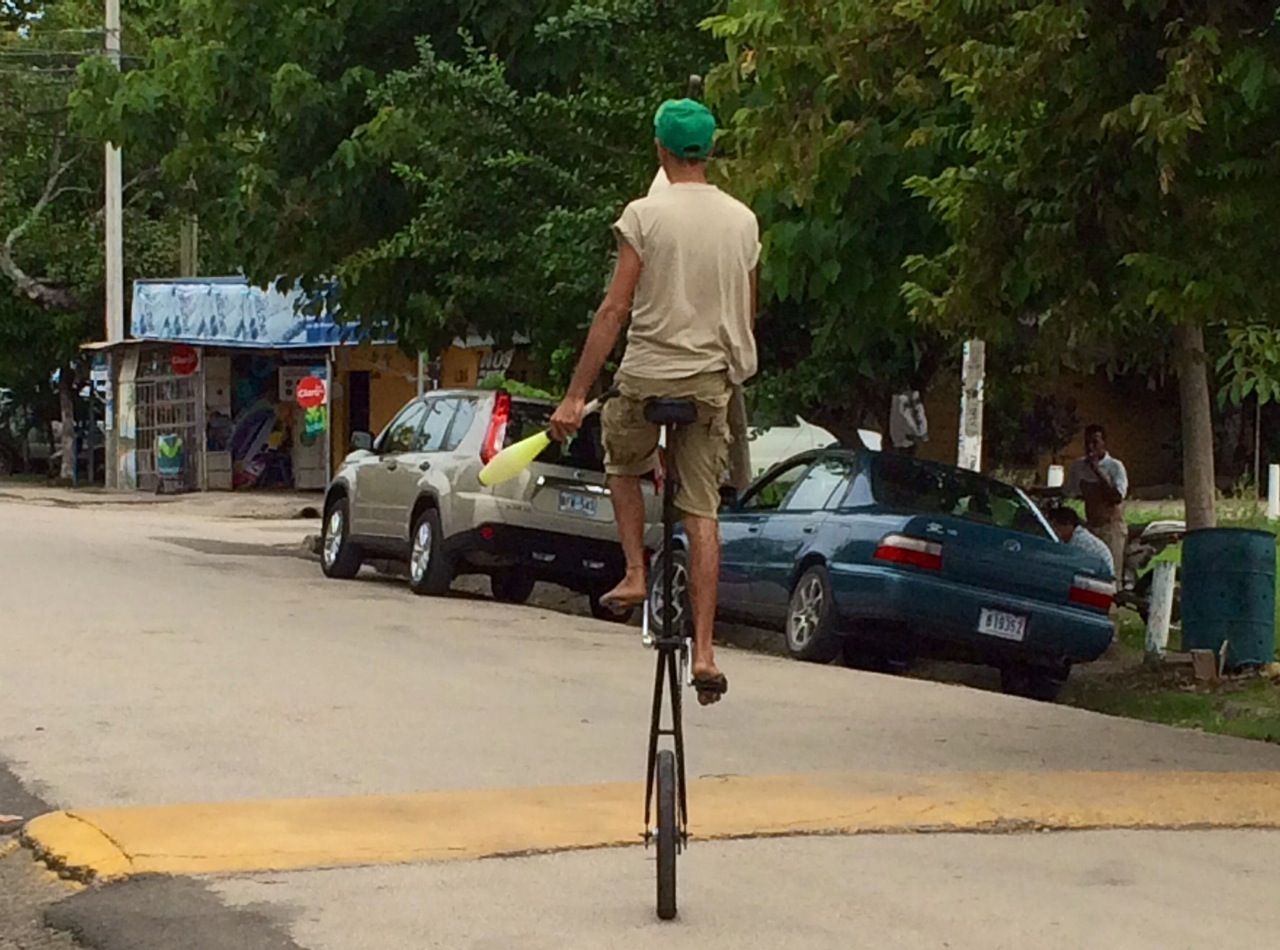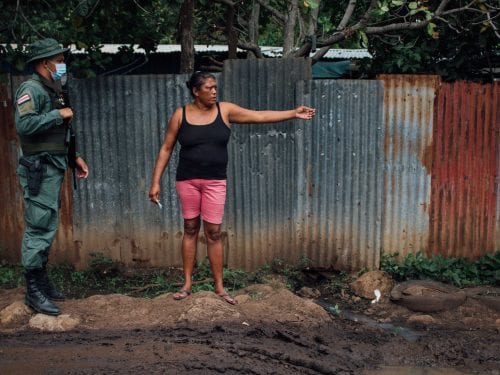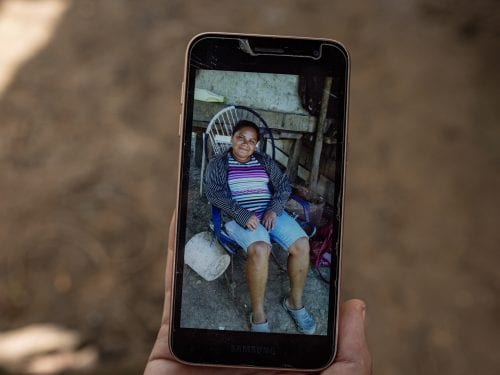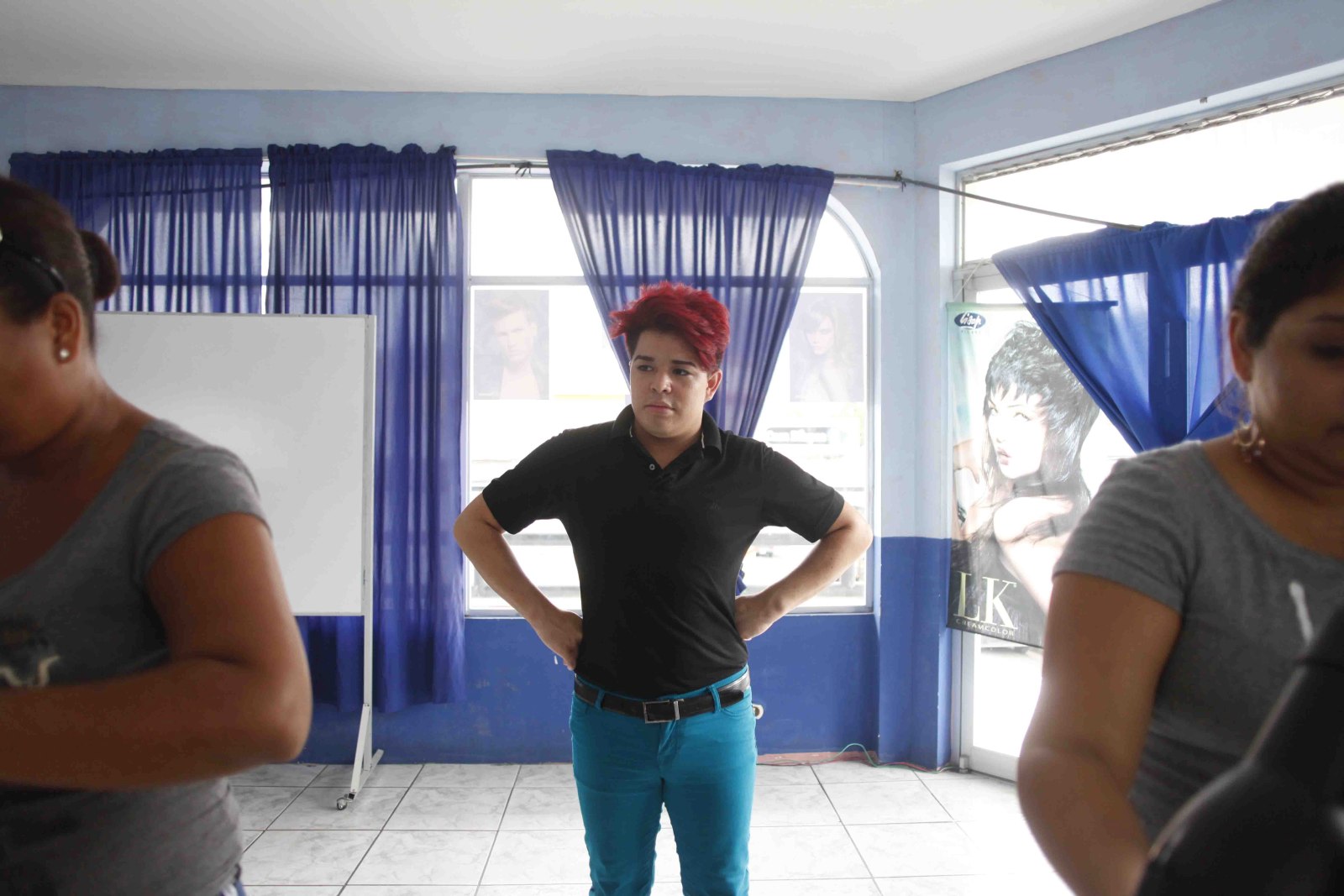
When I teach art, I think of it as teaching people to see. I think what defines artists is how intensely they experience the world. Ask a non-artist what color a tree trunk is and he will probably tell you brown. Ask an artist and he will start pointing to green tree trunks, red tree trunks and comment on the beautiful purples in the shadows. There is nothing I love more about teaching art than seeing the faces of people who see those purples for the first time . One of the reasons I write this blog is to encourage people to see and appreciate this place and its people. Just as people walk though the world missing much of the beauty in nature, they miss much of what is beautiful about each other.
Alejandro Cinquemani is an invisible man to many Samara residents and visitors. Those who do know him call him Flaco ( a reference to his tall thin frame). He is found across from the soccer field most days. Sometimes he sits in the shade of a colorful umbrella making jewelry and selling it to passers by. Sometimes he practices juggling on his unicycle out in the street. His jewelry table is small, but shoppers tend to notice it because the centerpiece is a carefully crafted bra made completely from metal links, all formed by hand. It was created as part of a set of little masterpieces unlike anything else I have seen here. The work of a true artisan.
One thing I learned from Flaco was the derivation of the word artisan. It is derived from two Latin words, arte and sano. “Art” and “to heal or make whole”. An artisan is a person who has learned the skills to make his art whole. Lovely.
Alejandro grew up in Buenos Aires in a progressive, intellectual family. His mother was a poet. His father was an actor and director. His father was “disappeared” by an Argentinian regime that found his views too leftist. Ironically, Alejandro was ejected, years later, from Cuba for associating with people thought to be too far to the right.
In Argentina, Alejandro showed promise in the arts early and went to school to study ceramics. After completing a two year program for artists he continued for three more years and was certified to teach art at the Escuela Nacional de Ceramica. He is a man of many gifts. He worked as a teacher in Argentina. He developed and promoted artists in Cuba for several years, helping emerging artists document their experience and find exhibition opportunities. He was a performer in theater and on the streets of San Jose and still returns there to perform from time to time. He travelled as a clown and puppeteer all over the country. His favorite role is a clown named Spaghetti, another reference to his physicality. He has a love of poetry, music, visual art and would love to teach art to children again. For 2 years he has been a jeweler in Samara.
Flaco says he wants to be here because it is a place he feels free. It is a simple statement, but full of the passion and promise that this man possesses. We talked about Samara and life and dreams. Flaco wants to paint and to get access to a kiln so he can do ceramics again. I hope he will find a way to do that here. He knows I am writing about him and I told him the working title was The Invisible Man. Another friend commented that Samara was kind of invisible too. It does not even have a welcome sign to mark its entrance. People drive through without even knowing they have been here. We tried to come up with a slogan for the town that would quickly tell people what Samara is and aspires to be. I’ve thought about it since and I think we do need a sign, and a slogan, perhaps it should say:
Welcome to Samara
SLOW DOWN
See the Beauty, Ride the inspiration







Comments